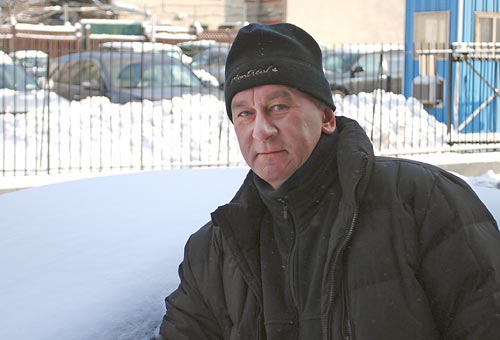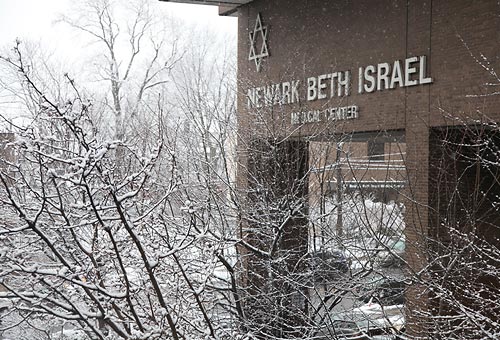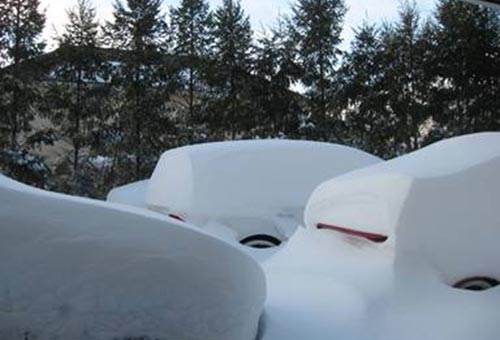

Blizzard Makes Getting to Work and Back a Challenge
January 13, 2011
The Northeast is no stranger to massive snow storms, but as we all remember from the news reports, the one that hit the day after Christmas was a little different from the run-of-the-mill blanket of white.

AARC member Mikhail Romanenko trudged 8.5 miles in the heavy snow to reach his job at New York Methodist.
“This blizzard had high winds and quick accumulation,” explains George Thumpayil, RRT-NPS, CPFT, clinical specialist at Newark Beth Israel Medical Center in Newark, NJ. “It was described as a ‘different’ type of snowflake than that to which we are accustomed, smaller and capable of penetrating machinery and cars, causing wetting and breakdowns. When public transportation shuts down, the challenges mount.”
Felix Khusid, BS, RRT-NPS, RPFT, who manages the RT department at New York Methodist Hospital in Brooklyn, says the city agencies weren’t prepared for the consequences, and that was where a lot of the problems got worse. “The clean up was not good,” says the AARC member. “More vehicles were stuck and could not be moved, so they were abandoned in the streets. Mass transit was not running for about three days.”

RTs at Beth Israel Medical Center went above and beyond to ensure patients were well cared for.
For a lot of folks, that just meant an extended snow day, but for respiratory therapists working in the area’s hospitals, it created a commuting problem the likes of which many had never seen before.
“Several of my RRTs walked two–three miles in the blizzard,” says Khusid. One therapist, Mikhail Romanenko, actually walked 8.5 miles from his home in Sheepshead Bay to get to work—a 4.5 hour journey in the heavy snow.
At Beth Israel, Thumpayil says several employees attempted to get into work by traveling down side roads, only to be turned around at the interstate, which was closed down. Those who did make it in had a heck of a time making it home.
“Fritz Pierre left after an extended shift and headed out to retrieve his wife from her hospital job only to be stuck on the highway for seven hours overnight in his car until it ran out of gas and he was required to abandon his car and walk three miles in the snow,” says Thumpayil. “Lou Sandler’s beloved 1997 Volkswagen chose that evening to decide to ‘take a break’ along Rt. 46, extending him the privilege of a six hour commute home and a ride in a tow truck.”

As clean up problems mounted, many cars were abandoned under snow drifts for days.
Other Beth Israel employees just hunkered down inside the facility. “Ann Beamon and Alka Parekh ran our EEG department for three days without returning home to ensure the continuation of a smooth operation to our patients,” continues the AARC member. “Lisa Lohse, a dedicated per diem employee, agreed to stay the night, and after a resting in our sleep lab returned to duty on a skeleton crew to finish out another 12 hour shift in the blizzard aftermath.”
Similar scenes played out at New York Methodist. “In our department, a few people headed into work before the storm was so bad that they were snowbound,” says Khusid. “Many RRTs stayed in the hospital for two days, ensuring that the next shift would not be short-staffed.”
As for patients, Thumpayil says the folks in his hospital remained calm, cool, and collected. “Our patients understood the challenges of running the operation through the storm and weathered it with good humor and confidence.”
Luckily neither New York Methodist nor Beth Israel experienced any major medical challenges during the ordeal, so operations continued to run smoothly. Thumpayil and Khusid attribute that in part to the dedication of their staffs.
“The commitment from my RRTs to provide patient care and to the hospital was truly spectacular,” says Khusid. “Everyone worked as one family for the common goal of being part of an institution that always wants to provide the best patient care possible.”
“Sharing adversity generally brings out the best in our crew,” says Thumpayil. “People rally to help one another with the single-minded goal of caring for their patients.”